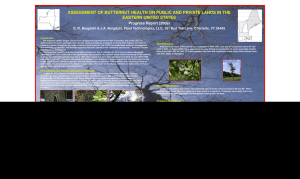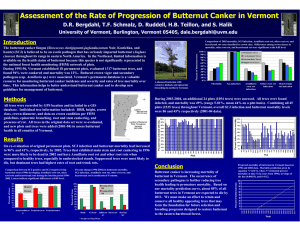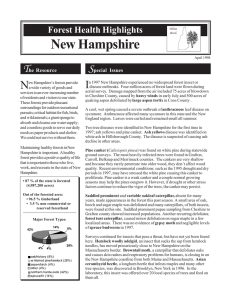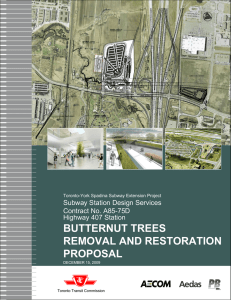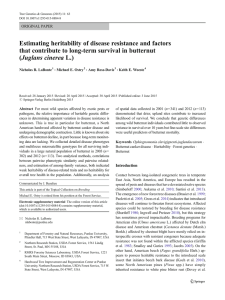Breeding Resistance to Butternut Canker Disease James McKenna, and Michael Ostry
advertisement
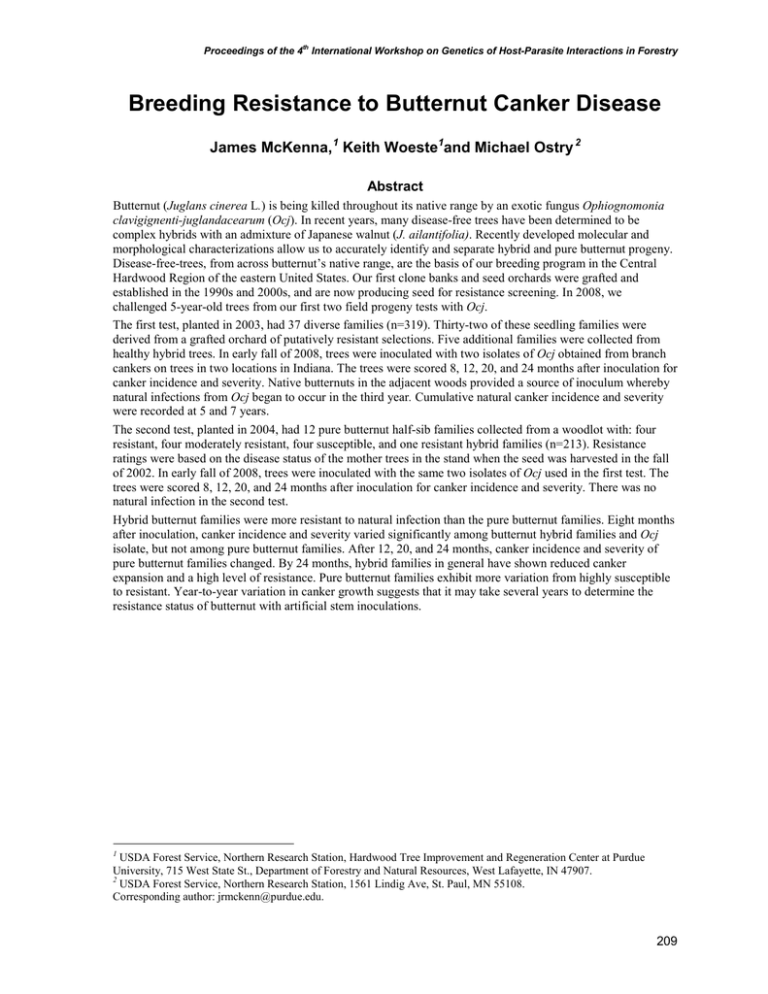
Proceedings of the 4th International Workshop on Genetics of Host-Parasite Interactions in Forestry Breeding Resistance to Butternut Canker Disease James McKenna, 1 Keith Woeste1and Michael Ostry 2 Abstract Butternut (Juglans cinerea L.) is being killed throughout its native range by an exotic fungus Ophiognomonia clavigignenti-juglandacearum (Ocj). In recent years, many disease-free trees have been determined to be complex hybrids with an admixture of Japanese walnut (J. ailantifolia). Recently developed molecular and morphological characterizations allow us to accurately identify and separate hybrid and pure butternut progeny. Disease-free-trees, from across butternut’s native range, are the basis of our breeding program in the Central Hardwood Region of the eastern United States. Our first clone banks and seed orchards were grafted and established in the 1990s and 2000s, and are now producing seed for resistance screening. In 2008, we challenged 5-year-old trees from our first two field progeny tests with Ocj. The first test, planted in 2003, had 37 diverse families (n=319). Thirty-two of these seedling families were derived from a grafted orchard of putatively resistant selections. Five additional families were collected from healthy hybrid trees. In early fall of 2008, trees were inoculated with two isolates of Ocj obtained from branch cankers on trees in two locations in Indiana. The trees were scored 8, 12, 20, and 24 months after inoculation for canker incidence and severity. Native butternuts in the adjacent woods provided a source of inoculum whereby natural infections from Ocj began to occur in the third year. Cumulative natural canker incidence and severity were recorded at 5 and 7 years. The second test, planted in 2004, had 12 pure butternut half-sib families collected from a woodlot with: four resistant, four moderately resistant, four susceptible, and one resistant hybrid families (n=213). Resistance ratings were based on the disease status of the mother trees in the stand when the seed was harvested in the fall of 2002. In early fall of 2008, trees were inoculated with the same two isolates of Ocj used in the first test. The trees were scored 8, 12, 20, and 24 months after inoculation for canker incidence and severity. There was no natural infection in the second test. Hybrid butternut families were more resistant to natural infection than the pure butternut families. Eight months after inoculation, canker incidence and severity varied significantly among butternut hybrid families and Ocj isolate, but not among pure butternut families. After 12, 20, and 24 months, canker incidence and severity of pure butternut families changed. By 24 months, hybrid families in general have shown reduced canker expansion and a high level of resistance. Pure butternut families exhibit more variation from highly susceptible to resistant. Year-to-year variation in canker growth suggests that it may take several years to determine the resistance status of butternut with artificial stem inoculations. 1 USDA Forest Service, Northern Research Station, Hardwood Tree Improvement and Regeneration Center at Purdue University, 715 West State St., Department of Forestry and Natural Resources, West Lafayette, IN 47907. 2 USDA Forest Service, Northern Research Station, 1561 Lindig Ave, St. Paul, MN 55108. Corresponding author: jrmckenn@purdue.edu. 209
